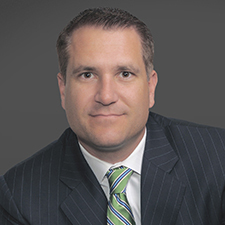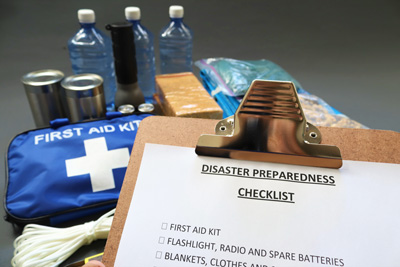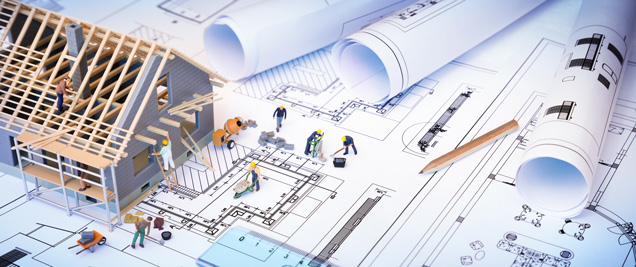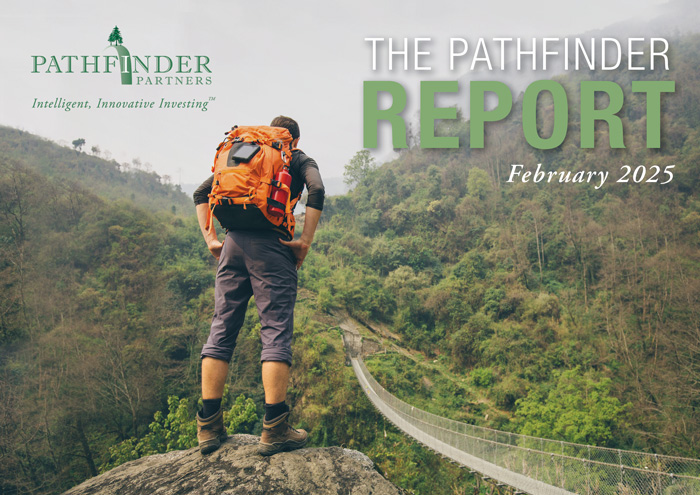Guest Feature
Early Lessons from the L.A. Fires
By Brent Rivard, Managing Director

The L.A fires that started on January 7th were devastating and widespread. We all seem to know people who were impacted in some way – whether they lost their home or business or have friends or family members who were directly impacted.
I grew up in Los Angeles and my wife and I attended UCLA. To watch such a wide area of my home city and areas I’ve driven many times burn to the ground was difficult to take in. I can’t imagine losing our home; our thoughts are with everyone impacted by the fires.
Black swan events – those that are low likelihood but have devastating consequences when they happen – do occur. The L.A. fires fit firmly into that category. The initial numbers are staggering. More than 12,000 homes, businesses, schools and other structures have been destroyed. Preliminary estimates indicate more than $30 billion in insured losses and up to $250 billion in total losses. Those losses would make these fires not only the largest loss from a wildfire in California, but the largest loss from a wildfire anywhere in the United States. This catastrophic event will have a long-term impact on the city of Los Angeles and a downstream effect on thousands of displaced residents.
As a homeowner, a property owner and a partner in a multifamily investment firm, I can’t help but try to learn some lessons from what happened in L.A. How can we prepare for events like this personally, professionally and as a community? What are some of the early lessons that we can translate into actionable steps to both assess and mitigate risks?
Personal Planning
I’ll admit that our family is not ready for a fire evacuation, but we should be. Our neighborhood backs up to canyons that are at risk for fire, and we’ve had friends from L.A. evacuate their homes and stay with us in San Diego. But it could never happen to us...! I think the first step is recognition that we are all at risk. The changes in the strength and frequency of the winds in Southern California and increasing density in neighborhoods like Alta Dena and Pacific Palisades should wake us up. Fires move fast and the more prepared we are, the higher our chance of surviving and thriving following a natural disaster. Within 48 hours of the start of the L.A. fires, there were several fire preparation checklists being circulated over email. The best one I received (and will be using) is a 17-page document developed by residents in Lahaina, Maui (Hawaii), which experienced a similar black swan fire event in August 2023.
If you don’t have a preparation checklist, email me and I’ll send you this one. It’s a comprehensive list of not only what to bring with you when you evacuate, but steps to take with your home before and during an evacuation. The early lesson learned from watching the L.A. fires and hearing the stories of those impacted is to do more advance preparation with our homes and families. That includes physical preparation, maintaining a disaster recovery plan and making sure we have proper and adequate insurance policies.
Insurance
 We don’t have enough information to determine the long-term impact of the L.A. fires on the California insurance industry. What we do know is that every property owner will feel the impact, which is expected to range from the ability to obtain proper insurance to large cost increases. As the frequency and severity of wildfires rises, insurance companies face greater financial risk, leading to skyrocketing premiums for homeowners. In some cases, insurers may choose (and have chosen) to pull out of high-risk areas altogether, leaving property owners with limited options for coverage or forcing them to rely on state-backed insurance programs such as the California Fair Plan.
We don’t have enough information to determine the long-term impact of the L.A. fires on the California insurance industry. What we do know is that every property owner will feel the impact, which is expected to range from the ability to obtain proper insurance to large cost increases. As the frequency and severity of wildfires rises, insurance companies face greater financial risk, leading to skyrocketing premiums for homeowners. In some cases, insurers may choose (and have chosen) to pull out of high-risk areas altogether, leaving property owners with limited options for coverage or forcing them to rely on state-backed insurance programs such as the California Fair Plan.
It remains to be seen if programs such as the California Fair Plan will survive and how settling the losses from the L.A. fires will impact California’s budget and income tax rates. Rates will rise across the board. We’ve already seen the state approve a 22% increase in premiums for State Farm to help cover its losses and that’s likely just the beginning. I recently read an article about how insurance premiums were held down by the state of California and that rates in California didn’t properly reflect the risks of loss or the actual costs of home ownership. Artificially holding down insurance costs is akin to falsely inflating property values. Will property values decrease with rising insurance rates? We’ll see.
Any early lessons from watching the insurance industry react to the L.A. fires? One is to be proactive with your homeowner’s insurance. Most homeowners don’t pay much attention to their coverage and just wait for the renewal. In today’s market, it’s important to get ahead of your insurance renewal. Developing a strong relationship with your insurance broker is important. Make sure they know you and your home and will advocate for you with the insurance companies. Take advantage of discounts or tax incentives for using fire-resistant materials or creating defensible space around your property. It’s also important to understand your coverage limits and how you would be impacted in the event of a disaster. Better to be over-insured than under, but most of us probably don’t know how our coverage relates to rebuilding or alternate housing costs. Speaking of rebuilding and housing….
Temporary Housing and Rebuilding
We’ve all heard stories about displaced L.A. residents looking for temporary housing. There’s been everything from bidding wars on rental properties (we’ve heard some crazy stories of $50,000 per month leases) to resale home supply dwindling to predatory landlords taking advantage of the situation. It’s clear that our cities need more robust emergency housing plans, but we all probably need to spend time thinking about our own emergency plans. Where would you go? Who could you stay with? What type of housing do you need as compared with what you want? I don’t have any answers to these questions. It would be highly dependent on the nature of the disaster but putting some mindshare on it occasionally, could put you in a better position should disaster strike.

What about rebuilding? It’s going to be a long time before we start to see actual structures being rebuilt. Optimists in L.A. talk in terms of five years; others have much longer time horizons. There’s a lot to be done before construction starts, including clean-up, city infrastructure repairs and planning for what is to be rebuilt. Hopefully, the local governments will create efficient paths for building codes and plan approval to accelerate the process.
It’s been over 18 months since the Lahaina fires and there are just now some homes and structures starting construction. The massive number of structures and homes that need to be replaced in L.A. will eventually put extreme pressure on the availability of building materials and labor. We should prepare for that impact whether we’re planning a home remodel or are in real estate development. The long rebuilding process is also likely to slow down any progress being made on the overall southern California housing shortage, which could have downstream impacts on the economy, population and job growth.
Schools and Education
The last area I want to address is the L.A. fire impact on schools and education. One of the most heart-wrenching consequences of the Los Angeles fires is the disruption of education for thousands of children who lost their homes. For many students, the fire not only destroyed their homes but also their access to safe schools and the routine that provides stability in their lives. The good news (if you can find any) is that our schools should be more prepared to maintain education continuity due to what we experienced during the Covid-19 pandemic. Then, schools were forced to provide education on a remote or online basis. Some did it well, and some didn’t. We’re hoping that the experiences learned then will help our youth impacted by the fires to return to a stable educational environment as soon as possible.
There’s More to Learn
The devastation caused by the Los Angeles fires has left deep scars on the affected communities, but it has also presented an opportunity to think about how to prepare. There are more lessons to learn in addition to the short list above. What can we learn about more robust firefighting, water supply, air quality implications, supply chain impacts or access to food/grocery stores in communities where they burned to the ground? We will all spend the next several years monitoring progress in Los Angeles and hopefully learning lessons for ourselves, our communities and our government to mitigate risks from black swan events that are sure to come in the future.
Brent Rivard is Managing Director and COO of Pathfinder Partners, LP. Prior to joining Pathfinder in 2008, Brent was the President of a national wealth management firm and CFO/COO of a one of southern California’s leading privately-held commercial real estate brokerage firms. He can be reached at brivard@pathfinderfunds.com.
Share this Article
IN THIS ISSUE
PATHFINDER MULTIFAMILY OPPORTUNITY FUND IX, L.P.
CHARTING THE COURSE
Trumponomics 2.0: (aka “Move Fast and Break Things”)
FINDING YOUR PATH
The Chickens are Coming Home to Roost
GUEST FEATURE
Early Lessons from the L.A. Fires
ZEITGEIST
News Highlights
TRAILBLAZING
Casa Madrid, Chula Vista (San Diego), CA
NOTABLES AND QUOTABLES
Diligence
